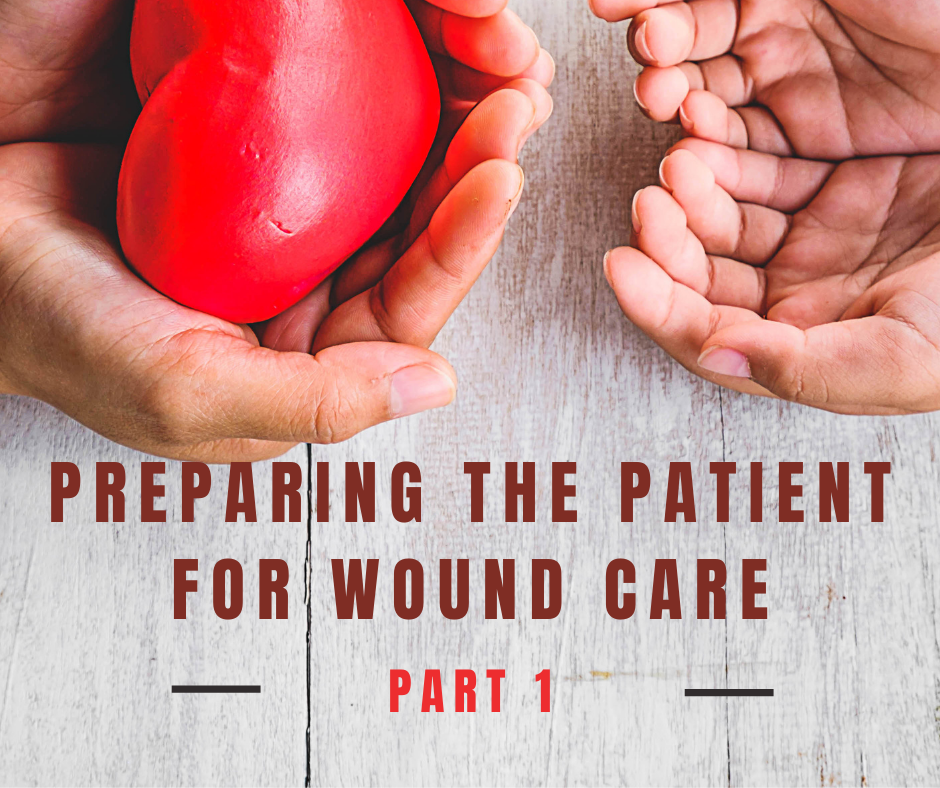Rx Pad
Improving the Health of Your Clinical Practice
Preparing the Patient for Wound Care (Part 1)
In this series we're going to breakdown the main techniques to comfort patients when preparing for wound care treatment.
I. Preparing the Patient for Wound Care
- Transfers (tools needed for safe transfer)
- Chair to chair: gait, belt, slide board, asissted pivot, dependent pivot.
- Chair to bed: gait belt, slide board, asissted pivot, dependent pivot.
- Bed to stretcher: draw sheet, full-length slide board
- Bed to chair: gait belt, slide board, assisted or dependent pivot
- Considerations for individual patient conditions and mobilty issues should be addressed (i.e., contractures, amputations, hemiparesis, or paraplegia)
- Patient Comfort
- Positioning to achieve comfort and protection of patient
- Allows for the best wound care
- Considerations should be taken for the patient's size, mobility, and wound site.
- What works best for the patient and the provider?
- Treatment environments: instruments, supplies, and dressings should be readily available.
- Area should be clean and private with a relaxed atmosphere.
C. Pain Scales
- Visual analog scale (VAS)
- Scale: 0 =. no pain, 1 - 3 = mild pain, 4 - 7 = moderate pain, 8 - 10 = severe pain
- Numeric pain intensity scale
- Scale is 0 - 10; 0 = no pain; 1 - 3 = mild; 4 - 6 = moderate; 7 - 9 = severe, 10 = worst possible pain
- Wong-Baker FACES Pain Rating Scale (for pediatric patients and patients with limited understanding)
- Happy face (no pain) to crying face (worst pain)
- Most reliable source: patient's self-report of pain existence and intensity
- Monitor for signs of pain in nonverbal patients: increased agitation, crying, grimacing acting out, pacing
- Visual analog scale (VAS)
Source Reference: Wound Care Certification Study Guide, Second Edition by Jayesh B. Shah, MD, Paul J Sheffield, PhD, Caroline E. Fife, MD
Free Report Reveals the "10 Pearls" To Ace Your Certification Exam
Discover The "10-Pearls" to Ace Any Wound Care Certification Exam.
The secrets that all wound care certification test takers need follow, but no one ever told you.
This free report reveals the exact 10 steps you need to follow to pass any wound care certification exam . . .
- Learn what the certification agencies are looking for in your test answers.
- Discover which exam answer choices to avoid.
- Conquer test-anxiety.
Stay Informed
When you subscribe to the blog, we will send you an e-mail when there are new updates on the site so you wouldn't miss them.



Comments